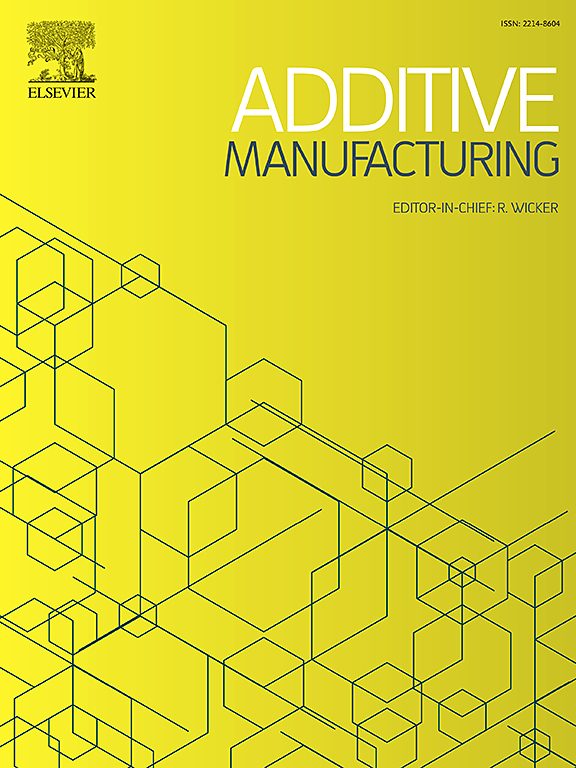Thin-plate lattices in AlSi10Mg alloy via laser additive manufacturing: Highly enhanced specific strength and recovery
IF 10.3
1区 工程技术
Q1 ENGINEERING, MANUFACTURING
引用次数: 0
Abstract
Metallic lattices have emerged as a class of lightweight, strong, and multifunctional materials with growing applications. However, their specific strengths (strength-to-density ratios) often fall significantly short of those of their bulk metal counterparts. Thin-plate lattices (TPLs), featuring submillimeter-thick metal plates, present a promising solution. Yet, traditional manufacturing methods have long hindered their development. This study investigates laser additive manufacturing and the mechanical properties of axially isotropic AlSi10Mg alloy TPLs, designed with various unit cells, including cubic, cuboctahedron, truncated-octahedron, rhombicuboctahedron, and sphere structures. With densities ranging from 0.57 to 1.13 g/cm³ , these TPLs achieved exceptional specific yield strengths up to 90 % of the base alloy—significantly surpassing the performance of strut-based metallic lattices, which typically achieve 50–60 %. Additionally, under uniaxial compression, the TPLs demonstrated remarkable near-complete peak stress recovery, even at high strain levels (>50 %) or during fragmentation, offering a unique safety mechanism. This recovery was driven by distinct failure modes: at lower densities, fractures progressed layer by layer, leaving intact layers, while at higher densities, crack deflection enhanced resilience. These findings position TPLs as a transformative advancement, combining exceptional specific strength with robust recovery characteristics to outperform conventional lattice designs in multifunctional, high-performance applications.
求助全文
约1分钟内获得全文
求助全文
来源期刊

Additive manufacturing
Materials Science-General Materials Science
CiteScore
19.80
自引率
12.70%
发文量
648
审稿时长
35 days
期刊介绍:
Additive Manufacturing stands as a peer-reviewed journal dedicated to delivering high-quality research papers and reviews in the field of additive manufacturing, serving both academia and industry leaders. The journal's objective is to recognize the innovative essence of additive manufacturing and its diverse applications, providing a comprehensive overview of current developments and future prospects.
The transformative potential of additive manufacturing technologies in product design and manufacturing is poised to disrupt traditional approaches. In response to this paradigm shift, a distinctive and comprehensive publication outlet was essential. Additive Manufacturing fulfills this need, offering a platform for engineers, materials scientists, and practitioners across academia and various industries to document and share innovations in these evolving technologies.
 求助内容:
求助内容: 应助结果提醒方式:
应助结果提醒方式:


